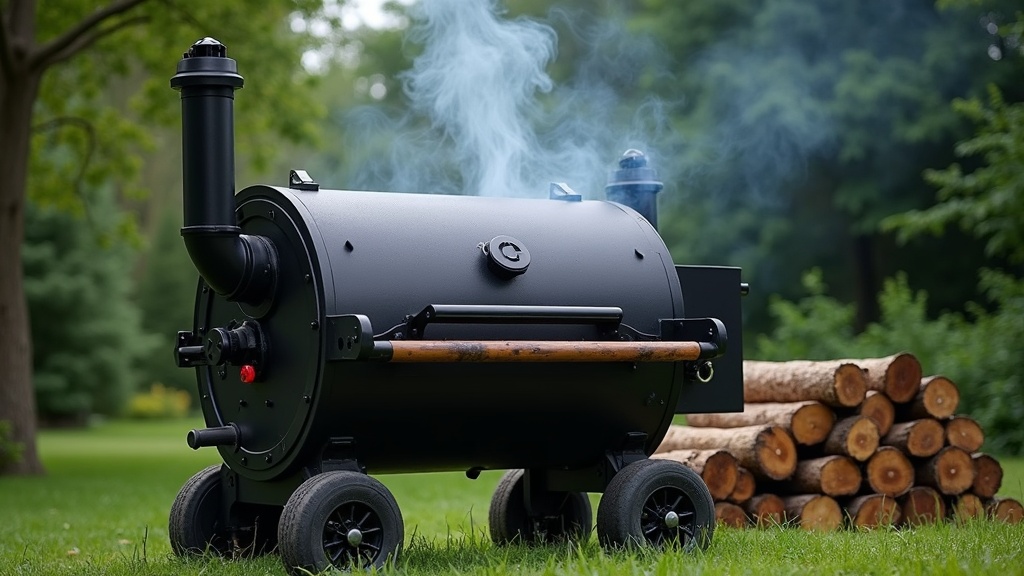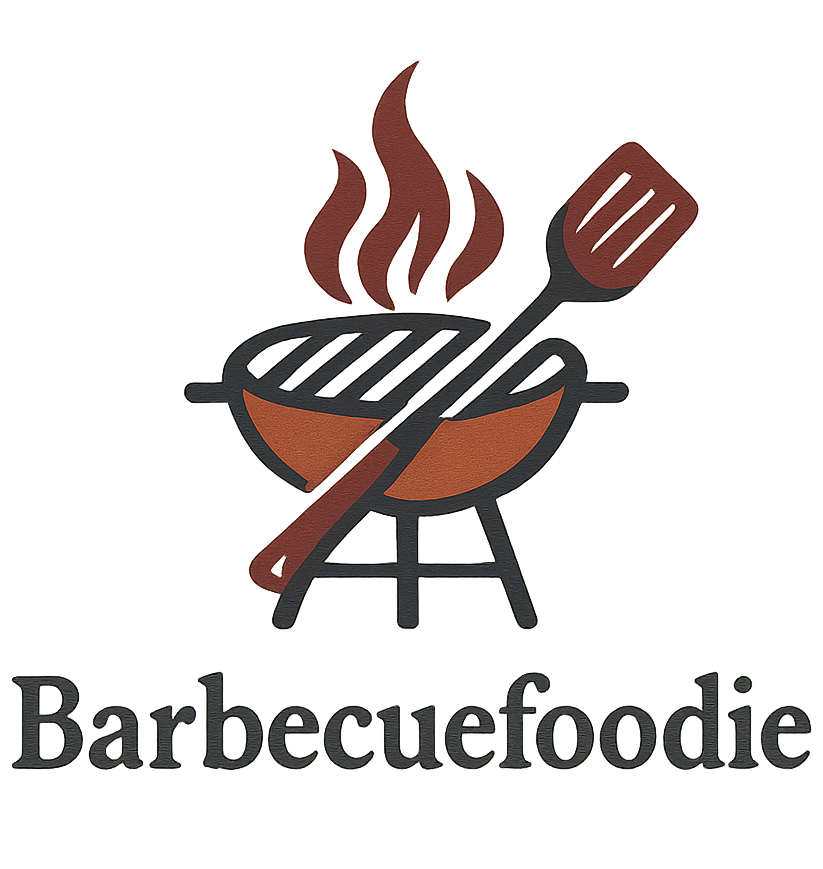Finding that balance between too much smoke and not enough can be pretty tricky, but it’s key if you want barbecue that’s rich, flavorful, and never overwhelming. Figuring out how to control smoke levels during grilling or smoking will help you avoid the classic mistake of making things taste like an ashtray instead of a mouthwatering meal. I’m walking through everything you need to know for dialing in the right amount of smoke, so your next smoked brisket or rack of ribs comes out tasting amazing.

Getting To Know Smoke: Why It Matters in Cooking
Smoke isn’t just for show; it’s what gives barbecue its flavor punch. The type, amount, and timing of smoke can all influence how your food tastes, smells, and even feels in your mouth. Wood smoke carries compounds like phenols and aldehydes, which are what make your food taste smoky, sweet, sharp, or earthy. Too much of those compounds, though, can leave a bitter or acrid bite.
The historic use of smoke for both preserving and flavoring food stretches back thousands of years. Smoking meats and fish was a natural way to keep things edible longer before fridges came along. These days, most folks smoke for taste instead of storage, but the basic approach hasn’t changed. Once you figure out how to manage your smoke level, you’ll notice your flavor results become a lot more predictable and refined.
Understanding The Basics: How Smoke Works In Your Smoker
There’s a bit of science behind the smoke your grill or smoker creates. It’s not always about more wood or longer cook times. Different woods, how dry they are, and your cooking temperature all create slightly different smoke effects.
Types of Smoke:
- White Smoke: Dense, white smoke is produced when your wood isn’t fully combusting. It can leave your meat tasting bitter.
- Thin Blue Smoke: This is the holy grail; barely visible, almost blue smoke. It signals clean, efficient burning and adds a smooth, sweet flavor.
- Black Smoke: This kind is a warning sign. Black smoke happens with smoldering, smoky fires, incomplete burning, or drippings igniting. Food cooked in these conditions ends up acrid and sooty.
Understanding which type of smoke your setup is producing helps you make adjustments on the fly. The goal is to keep things steady and in that thin blue smoke zone for most of the cook.
Step by Step Guide: How To Dial In Smoke Levels For Better Flavor
Trying to figure out the right smoke level is a combo of science and hands-on experience. These steps help get you closer to that all-in-one, well-rounded flavor each and every time:
- Pick The Right Wood:
Stick to flavors that match the meat. Hickory and oak are classics for brisket and pork, while apple and cherry give chicken and fish some sweet, gentle smoke. Always use seasoned (dry) wood; fresh, wet wood brings lots of unwanted bitterness. - Control The Fire’s Airflow:
Too much air means a hot, fast burn with little smoke. Too little air gives you heavy, sooty smoke. I keep my intake and exhaust vents partially open, tweaking as things cook, so I maintain a slow, even burn. - Keep The Fire Small And Clean:
A big fire throws off lots of dense, white smoke. Smaller, steady fires are easier to manage and keep you in the thin blue smoke zone. - Don’t Overload With Wood Chunks Or Chips:
It’s tempting to load up for “max flavor,” but dumping in a pile of wood at once usually means a flood of harsh, heavy smoke. Start with a couple of chunks or a handful of chips, and only add more as needed. - Let The Smoker Settle Before Adding Food:
When you first get a fire going, your smoker sends out white smoke. Wait until the temperature stabilizes and you see blue smoke before placing meat inside. - Avoid Lifting The Lid Too Often:
Every time you open the smoker, you lose smoke, heat, and flavor. Try to keep the lid closed as much as possible to keep your cook nice and consistent.
Key Considerations For Controlling Smoke In Different Setups
Managing smoke can vary depending on the kind of grill or smoker in use. Here’s what helps for each type:
- Charcoal Smokers: Set up for indirect heat (charcoal on one side, meat on the other), and use vents to manage airflow. Add wood chunks directly onto the coals once they’re ashed over.
- Pellet Grills: Pellet grills naturally keep things at a steady temperature, so focus on which wood pellets you’re using and keep the hopper stocked for a consistent burn.
- Offset Smokers: Feed the firebox slowly, adding one or two logs at a time. Keep vents open to promote clean burning and steady smoke flow into the cooking chamber.
- Electric Smokers: These are straightforward. Avoid overfilling the wood tray, and check for leftover wood bits. If smoke gets thick, remove some chips and air it out a bit.
Wood Choice: Pairing For Balanced Flavor
One of my favorite parts of managing smoke is playing with wood flavors. Some woods are bold, while others are super mellow. Here are some must-tries:
- Hickory: Brings a strong, baconlike smoke perfect for ribs and pork shoulder.
- Oak: Clean, moderate, works with most meats, especially brisket.
- Apple & Cherry: Mild and sweet—ideal for chicken, turkey, and even veggies.
- Pecan: A little stronger than fruit woods, but not overpowering. Adds a nutty edge.
- Mesquite: A Texas favorite, but use sparingly. It’s intense and earthy, best for quick cooks like steaks.
Sneaky Things That Can Mess With Your Smoke Quality
Some issues that affect your smoke levels aren’t always obvious. Watch out for these:
- Grease Fires: Dripping fat on coals or burners flares up and produces thick, dirty smoke. Use a drip pan or cook in pans to catch grease and keep things clean.
- Old Gunk In The Smoker: Crusty bits and built-up soot can ignite, making for off-putting smoke. I clean my smoker every few cooks and empty the ash pan regularly.
- Humidity & Weather: Damp air makes it tougher for wood to burn clean. On humid or rainy days, give it time to reach blue smoke and don’t rush things by adding more wood.
Smoke Control Mistakes To Dodge
Even those getting the hang of their smoker run into these pitfalls:
- Piling On Too Much Wood: Hoping for flavor overload, but ending up with heavy, sooty results.
- Using Wet Wood: Damp chunks never burn clean and produce off flavors.
- Cooking Through Dirty White Smoke: Leads to bitterness and harshness that can ruin a dish.
More Advanced Tips For Mastering Smoke
If you want to level up your barbecue tech, these tips will set you apart from casual grillers:
- Try Short Smoking: For foods like cheese or fish, limit smoke exposure to 30-60 minutes, then finish cooking somewhere else to keep delicate flavors in check.
- Use A Water Pan: A water pan under your food helps even out temperature and adds humidity, which encourages smoother smoke and keeps meat juicy.
- Blend Woods: Mix stronger woods like hickory with milder ones for layers of flavor, letting you control intensity without one note overpowering the others.
- Monitor Internal Temperature: Most smoke absorption happens while the meat “sweats”—up to about 140°F. After that, ease off on the wood and let heat finish the job.
- Take Notes: Jot down wood type, quantity used, weather conditions, and results for each cook. This way, you can track down patterns and fine-tune your setup.
Questions People Ask About Smoke Flavors
Folks often check in with questions as they’re finding their style. Here are a few:
Question: Can I oversmoke my meat?
Answer: Absolutely! Too much smoke, especially from green wood or oversized fires, leads to a bitter crust that covers up even the best flavors.
Question: What’s the best way to get good at controlling my smoke?
Answer: Record your cooks—how much wood you used, fire temp, wood type, and any changes you made. The more you practice and look over your results, the more you can spot what works for your smoker setup.
Question: How do I know when I have the right smoke level?
Answer: Watch for faint, blue, almost invisible smoke escaping your vent. The smell should be inviting and sweet, instead of harsh or like a campfire. If the cooking area starts to fill up with thick, white or gray smoke, ease up and let it clear before keeping things going.
Practical Applications: When Smoke Control Really Matters
Getting your smoke level right is crucial for more than just big meat cuts. Here’s how it changes your results:
- Vegetables: Too much smoke overwhelms; keep it light and only for the early part of the cook.
- Baked Goods: A gentle bit of smoke is next-level cool for bread or pizza—just keep the exposure short and use mild wood.
- Cheese: Cold smoking cheese builds a perfect, toasty border. Watch closely, as cheese soaks up smoke lightning quick.
- Fish: With a gentle wood and short exposure, you get rich, balanced flavor instead of smoky overload.
There’s a lot of fun to be had with mixing woods, playing with timing, and checking out how your foods take smoke. Each experiment brings you closer to finding what you love most about your barbecue.
The trick to memorable barbecue comes down to careful control of smoke levels. Whether you’re using a basic kettle grill, pellet rig, or offset smoker, keeping your eye on wood, airflow, and timing shapes those flavors you’ll want to brag about. Give these tips a go, experiment with what works for you, and you’ll taste just how much more impressive your barbecue can be when you master smoke.
